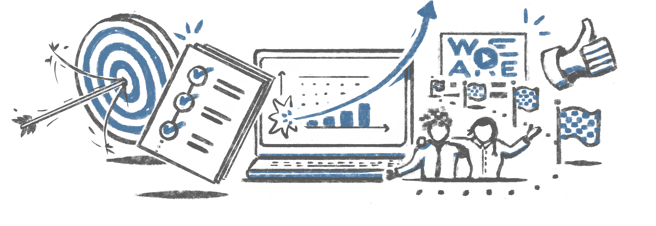In today’s fast-paced corporate landscape, understanding the pivotal role that learning initiatives play in enhancing employee skills and organizational competence is vital. However, implementing these initiatives is not enough. It is equally essential to measure their effectiveness to ensure a continuous cycle of growth and improvement.
By establishing learning measurement strategies, your organization can customize key performance indicators (KPIs), demonstrate quantifiable results, and secure essential knowledge. Here are seven tips on measuring learning initiatives to enhance overall workforce capabilities:
1. Customize KPIs for comprehensive understanding
Tailored metrics are indispensable when it comes to measuring learning initiatives. Course participation and overall results are just the tip of the iceberg. By customizing KPIs, your organization can gain invaluable insights into employee performance, identifying both strengths and areas for improvement. This understanding enables targeted positive interventions, ensuring a holistic approach to enhancing your organizational competence.
2. Prove time and cost savings for economic accountability
Economic accountability is a driving force behind learning initiatives. Demonstrating quantifiable results, such as time and cost savings, is vital. Efficient tools that minimize administrative burden not only enhance your organizational economics substantially but also free up resources that can be reinvested into further learning and development initiatives. By showcasing tangible savings, you can justify your learning investments and ensure the sustainability of future initiatives.

3. Utilize efficient tools for streamlined processes
Efficient tools are essential in measuring the effectiveness of learning initiatives. Automation can streamline your recurrent training efforts, particularly when it comes to issuing certificates and monitoring behavioral change. These tools not only enhance your workplace safety but also facilitate competence evaluation. By leveraging technology, your organization can ensure that learning efforts are streamlined, effective, and responsive to the evolving needs of the workforce.
4. Foster a continuous learning culture
Learning tools that empower employees to access knowledge at their convenience are invaluable. By promoting a continuous learning culture within your organization, employees are encouraged to enhance their skills and expertise continually. Accessible resources boost employee confidence, allowing them to navigate challenges and embrace new opportunities with competence. A workforce committed to continuous learning is an asset to any organization, driving innovation and adaptability.
"Accessible resources boost employee confidence, allowing them to navigate challenges and embrace new opportunities with competence."
5. Monitor behavioral change for safety and competence
Behavioral change is a crucial indicator of the effectiveness of your learning initiatives, particularly concerning workplace safety and competence. Learning tools that monitor employee behavioral changes provide valuable data points. By tracking these changes, you can evaluate the impact of your programs and identify areas that require further attention. This data-driven approach ensures that your efforts are aligned with the organizational goals and contribute significantly to enhancing overall workforce capabilities.
6. Encourage employee participation and engagement
Engaged employees are more likely to retain knowledge, apply new skills, and contribute positively to the workplace. Active participation and engagement are also key factors in measuring the success of learning initiatives. Therefore, your organization should encourage employees to actively participate in different courses and provide feedback on their learning experiences.
7. Embrace continuous evaluation and improvement
Measuring learning initiatives is an ongoing process that requires continuous evaluation and improvement. Your organization should regularly assess the impact of your initiatives, gather feedback from employees, and adapt strategies based on the evolving needs of the workforce and the organization. By embracing a cycle of continuous evaluation and improvement, you can ensure that your learning initiatives remain relevant, effective, and aligned with the organization’s objectives.
In conclusion, accurately measuring learning initiatives is crucial for organizations aiming to improve their workforce skills and stay competitive. This topic is just one of the many aspects explored in our new guide designed for HR and management professionals.
More reading: Offboarding – why a smooth goodbye ensures a brighter tomorrow
 Need help securing your organization’s future? Download our guide 20 focus areas for learning organizations – why investing in your human capital is key.
Need help securing your organization’s future? Download our guide 20 focus areas for learning organizations – why investing in your human capital is key.

Learnifier is an easy to use platform where you easily and effectively can share knowledge and create and administrate courses. Today over 320 companies and organizations of all sizes and from all over the world work with our learning platform.
.png?width=153&height=58&name=Learnifier%20TextLogo%20NearBlack%20-%20PNG%20MEDIUM%20-%20800px%20(2).png)





